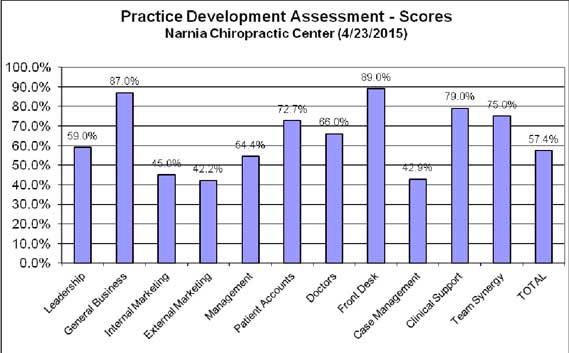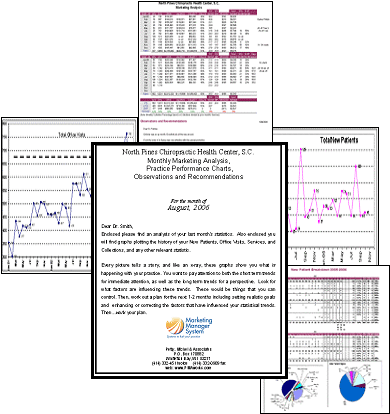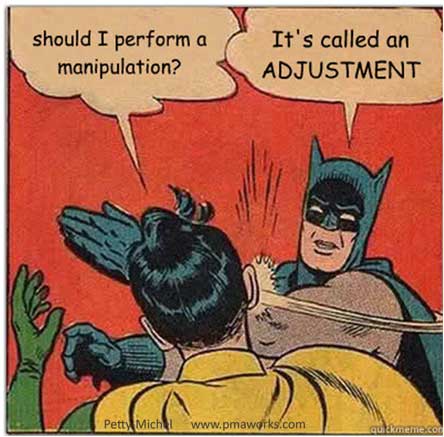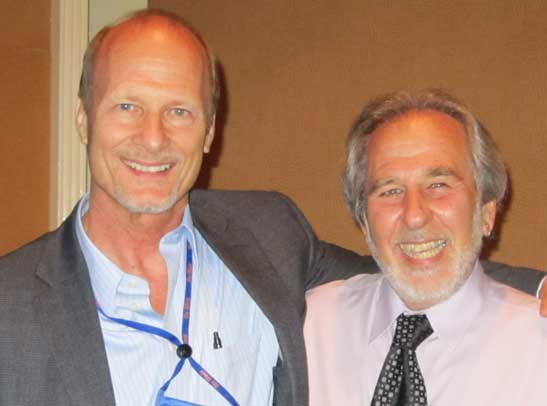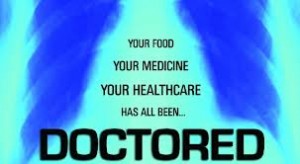The following is a list of 26 training webinars put on by Petty, Michel & Associates. These were recorded live for doctors who wanted to improve their skills as a CEO, for the office managers, and for marketing managers. The links provided take you to the recorded webinars on PM&A’s members site.
Over the years, we have learned a seemingly obvious fact: Any difficulties you are having in practice or in business usually do not stem from clinical issues, but from administrative ones.
Why are CEO’s paid so much?
One reason is that they can make such profitable difference in the business that boards of directors and accountants see that rewarding them is a good investment. Likewise, good managers and good marketers can be worth their weight in gold.
In chiropractic business training, however, there has been little adequate training or support for these roles. Yet the comparison to high paid executives and managers in other businesses also apply your office. The more effective you are as a practice CEO and leader, the more your office will be prosperous. And the better your office manager is, or your marketing coordinator, the more solvent your business will also be.
CEO Webinars
1. How to Be an Effective Practice CEO Video
If you are struggling with the ups and downs of a stressful practice, or have finally “settled” into a comfort zone producing much lower than you know you are capable of, this program is for you.
2. Capacity Constraints : 33 minutes – Summary and Video
Do you work hard but you just don’t get as far as you should? The reason may be that you are running into unseen bottlenecks that are choking off your production and suffocating your growth. This is the subject of Capacity Constraints.
3. Management by the Numbers: 44 minutes – Summary and Video
Management is a subject that has techniques to help you go from where you are to where you want to be.
Management By the Numbers (MBN) can be faster and more accurate than other forms of management, and help build staff morale and make it more self directed.
4. Creating your Dream Team Summary and VideoA virtual “live” interview with the doctor and staff of a true chiropractic dream team. Find out what they do to achieve high numbers, profit, and fun.
5. The Fast Flow Practice CEO -55 minutes webinar video and summary.
One of the biggest challenges in running and growing your business is the time it takes you away from seeing patients and from your family. We have solved this with what we call the Fast Flow Practice CEO System. A new system derived from old principles.
Chiropractic Office Manager Training Webinars
1. Chiropractic Office Manager Training Webinar- Part I – Fundamentals of Practice Management [Summary, Video]
Part I covers the fundamentals of Practice Management (55 minutes)
2. Chiropractic Office Manager Training Webinar- Part II – Tips and Tricks to make the office more efficient [Summary, Video]
Part II reveals tips and tricks of what an office manager can actually do in the office on a day to day basis to make things run smoother and significantly improve the volume and quality of services. (55 minutes)
======
3. Chiropractic Office Manager Training Webinar – It’s All About the Patient, the Doctor and the MISSION [Summary, Video and Study Guide]
There are procedures to help the patients and procedures that help the doctor help the patient and then there is Everything Else. Tips on how to deal with Everything Else. (30 minutes)
4. Chiropractic Office Manager Training Webinar – How to Hire the Right Team Member Summary, Video and Study Guide.
This webinar covers eight principles for hiring the right team member from knowing when to hire, who to hire and how to hire.
5. Chiropractic Office Manager Training Webinar– How to Best to Train Your Staff Summary, Video and Study Guide
This webinar covers eight tips to improve the performance of your team. Training plays a big part in team building.
6. Chiropractic Office Manager Training Webinar – The Office Manager Job Description Summary, Video and Study Guide.
This class covers 17 essential duties of the office manager. Both the doctor and the office manager should watch and discuss these duties.
7. Chiropractic Office Manager Training Webinar – Team Meetings Summary, Video and Study Guide.
This is an overview of 8 essential actions to help you improve your meetings and make them faster, more fun, and more effective. Plus, different types of short meetings that your team can grow.
8. Chiropractic Office Manager Training Webinar – Motivating Your Staff – Video Ms. Phyllis Frase shares 5 secrets to keeping yourself and your staff motivated.
9. Chiropractic Office Manager Training Webinar – Reviews Video
Employee reviews are often neglected, or are dreaded by employee and doctor. This webinar covers the basic steps to make them effective and positive for both doctor and employee. Approx 37 minutes.
10. Chiropractic Office Manager Training Webinar – Roles and Goals Summary, Video and Study Guide
What Are The Key Roles In Your Office? A hidden barrier in many offices has to do with confusing roles and job duties. Clear these up and see how much smoother patients and paper flow, and happier the team becomes. Small office or big health business, clarify these 8 roles and the numbers will go up.
Chiropractic Marketing Manager Training Webinars
1. Marketing Management – Session I – Summary and Video The Why, What and How of Marketing. Getting your Marketing off the Ground. (55 minutes)
2. Marketing Management – Session II – Summary and Video Specific Marketing Manager Duties – Your Job Description. General Overview of the Most Effective Marketing Procedures in Each of the 11 Marketing Categories (55 minutes)
====
3. Marketing Tips for Chiropractic Marketing Managers – Summary and Video This is a short version of marketing management and some tips for the upcoming months. What are the three levels of marketing? What part does communication have in your marketing? How to engage your patients in your marketing efforts. Upcoming special promotions. (30 minutes)
4. Marketing Tips for the Chiropractic Marketing Manager – Summary and Video This webinar covers: Powerful internal marketing script, Report of findings referral procedure, upcoming spring promotions, with special attention to utilizing Earth Day as an opportunity to promote your services.
5. Scheduling Chiropractic Screenings and other External Events – Summary and Video . How to Schedule External Events And Create External Referral Sources. Types of events, Outcomes, Purpose. How to plan the events and get them scheduled.(30 minutes)
6. The Art of Chiropractic Spinal Screenings. – Summary and Video . Spinal Screenings – The Queen of External Marketing. Everyone has done at least a few spinal screenings. You have probably had some success with them. But how much better could you do if you knew the fundamentals of this time tested external marketing activity? This is a three part series on spinal screenings. This session we will review the most fundamental principles of screenings. Get these, and all else will follow.(45 minutes)
7. Chiropractic Infomercials. – Summary and Video .
Whatever happened to Infomercials? They’re still around and they still work. And you can do them very inexpensively. You just need to know how.
This webinar will give you practical examples and include forms for you to use in producing your own amateur and informational marketing that can help you create more new patients and keep the ones you have.
8. Chiropractic Patient Education – Summary and Video (45 min)
We go over 7 basic strategies that cover the entire horizon of patient education and explain why it is so necessary to educate your patients if you want them to be healthier.
9. Chiropractic Patient Retention – Summary and Video
If you understand the underlying basics of patient retention your appointment book should always be full. Covered in this webinar is: Patient retention should be based on Principles – not gimmicks. Where are we you taking your patients? Why they quit? The cost of not getting them there.
10. Chiropractic Special Promotions (55 minutes) – Webinar plus Summary.
This webinar covers different promotions by month. You will learn 2-4 different practical promotions for each month of the year. More importantly, you will learn how to organize them so that they are time effective and productive.
11. Innate Marketing (55 minutes) – Webinar plus Summary.
There are stories that float around every now and then about how some offices can simply “think” “New Patients” and they come in.
Are these stories an urban legend? A myth, or a fact? Can staff or doctors “concept” new patients in the door. Is this true? If so, how can you do this? 10 steps to help you generate more patient visits through “concepting.”



